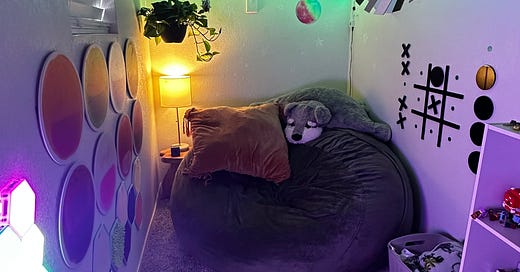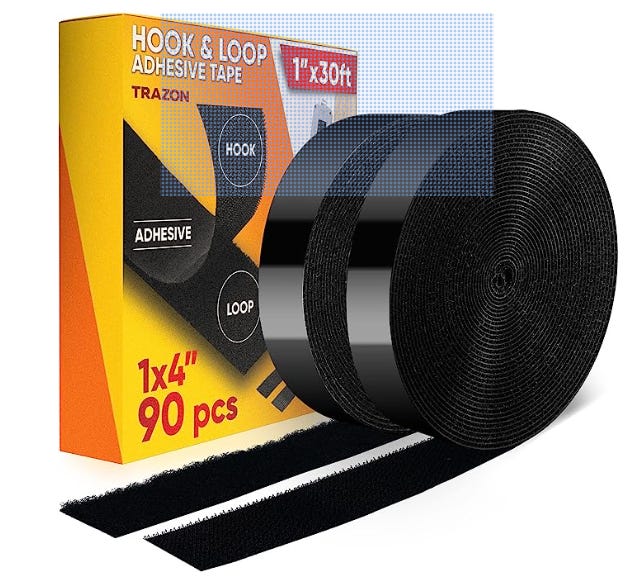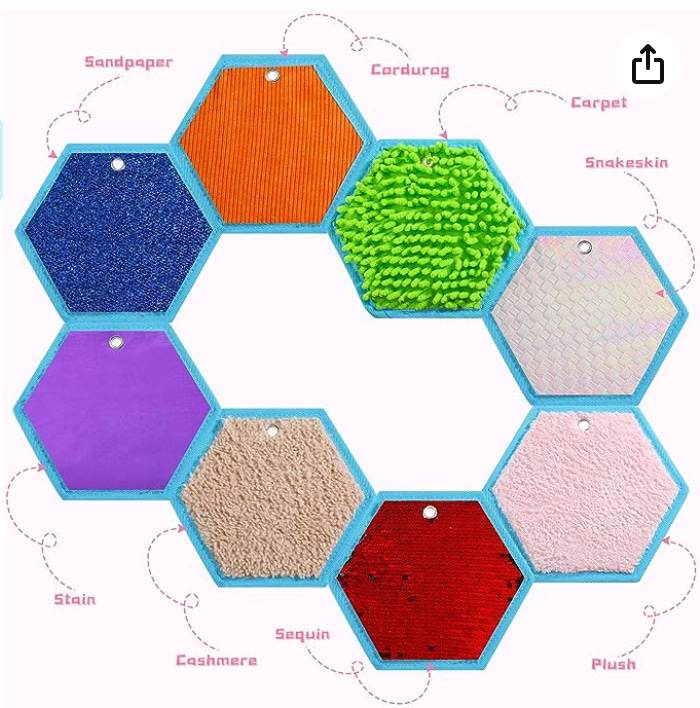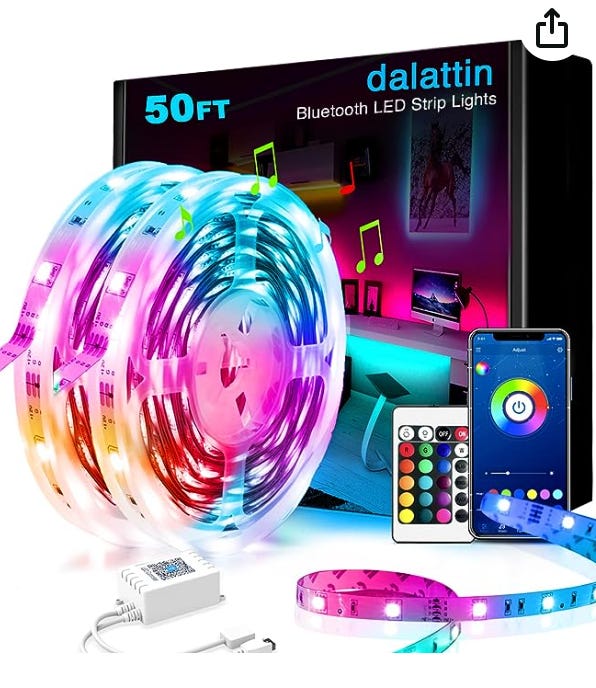I Built A Sensory Room In A Walk-In Closet And This Is How I Did It
Curious about the items I purchased? Here is a list of stuff I bought for the sensory room and my thoughts on each item.
One of the things I struggle with at home is how loud it can be in a house with five people and three pets. Knowing that I struggle with the loudness of our house, I can only imagine how difficult it is for my autistic son. He uses his room as his cooldown spot a lot, but sometimes I have found him hiding in the closet because he says “It’s the quietest.” So, I thought for a good long time about how I could make his closet a space for him to chill out in.
At school, my son has a sensory gym/room and sensory cool-off zones in the therapy centers. Many of the spaces the school created were made from small-ish closets and transitioned into functional, quiet spaces for kiddos with sensory icks. I took this idea and slowly, over time, built a collection of items I could move into our closet at home.
What is a sensory room?
A sensory room is an environment developed for kids and adults with autism who actively seek out stimulation or less stimulation in order to regulate themselves effectively. These rooms are typically equipped with specialized toys, surfaces, lighting, and things that engage the eight senses. In a school setting, these rooms have been shown to improve learning opportunities for children with intellectual disabilities (not just autism), and one’s ability to predict outcomes in their immediate environment. Differences in the ability to predict environmental stimuli are also central to many recent frameworks put forward to understand autistic characteristics, such as Bayes and predictive coding (e.g. Palmer et al., 2017; Pellicano & Burr, 2012; Powell et al., 2016; Van De Cruys et al., 2014).
According to Dr. Katy L Unwin,1,2 Georgina Powell,1 and Catherine RG Jones1, “Increasing control over the sensory environment within the MSE could therefore relieve both the perceptual discomfort and psychological distress from uncertainty, thereby supporting behavior change and creating better conditions for learning or receiving therapeutic intervention.”
Basically, sensory rooms allow autistic individuals to gain a strong footing on their environment and adjust successfully to things that might disrupt their typical life.
Why create a sensory room in your home?
Knowing sensory rooms in school settings increase learning opportunities for those with intellectual disabilities, why not increase learning opportunities and successful adjustment into your home? Establishing a sensory room at home is an almost guaranteed way of ensuring what you’re teaching your kiddos at home is going to soak in. External stimuli of any kind can be too much for any person so when you’re autistic and struggle to live in a world that is actively working against you, it can make adjustments to life at home all the more difficult. Why do we need to expose autistic people to a difficult life at home when they face that already outside of the home? We don’t.
We as parents hold the power to create a safe space for our kids–regardless of their abilities–to thrive in. Our sensory room does exactly this for my son, me, and my toddler who has sensory processing disorder. Now, I’m not saying “if you don’t have this sort of room for your kid or partner with autism you’re doing them wrong,” No. I’m simply saying, if you have the ability to do so, the budget to do so, and the space, why not? It’s only going to benefit your loved one, and probably you too!
Image source: https://www.ncbi.nlm.nih.gov/pmc/articles/PMC9340127/
You mentioned eight senses…what is that? I only know five.
To be transparent, I recently learned about the eight senses when going through diagnostics with our toddler’s therapist. Before then? I only knew about five. So let’s go over those first five.
We have…
Sound
Touch
Smell
Sight
Taste
We all have a pretty basic understanding of what these all are. So let’s spend more time understanding the other three senses.
The missing three senses are:
Vestibular (sense of head movement and where our body is in time and space)
Proprioceptive (sensations from muscles and joints)
Introception (delay in potty training, zero to 100 mood, physiological response to our body)
A sensory room allows the whole body to fulfill each of our eight sensory input needs through the specialized equipment I mentioned earlier. While I’d love to do a deep dive into the eight senses and what I’ve come to understand about them, I’m going to stay focused on the sensory room in this post. If you’d like to jumpstart into the eight senses click the button below to learn more:
Sensory Room Build Results
This project took 3-4 days to complete…technically it’s not done yet as the curtains fell off (polyester is not a great choice) and I need to find a replacement fabric that will soften the sound in the room further. An important note here is that if you’re turning a closet into a sensory room, they don’t have great airflow, and if you’re like us and live in a hot climate, it’s vital that you create a good airflow into the room. Here’s how I achieved this with two fans from Target/Amazon that I 100% love and also use throughout my house. My sensory ick is being overheated and these fans have such a powerful airflow. We’re talking a 75-foot radius. Anyway, allow for better airflow into the space so it’s cool enough to enjoy.
Here’s the fan:
Sensory Room Products
Before you dive into the products I chose, check out the video below for a full-on view of what I did over the course of a few days.
Magnetic Tik-Tak-Toe Board
Heavy Duty Velcro Tape
Moon and Stars Stickers
Hexagon Lights
Tactile Sensory Mini Mats
GIANT Bean Bag Chair
Liquid Color Mats
Weighted Vest
Portable Black Out Curtains
LED Bluetooth Track Lighting
Thanks for reading and checking out my sensory room build! If you want to learn more leave a comment asking for a “sensory system deep dive.” If you could share this with a friend and spread the goodness of sensory rooms I would greatly appreciate it!
About the Writer
I’m Sarah Potter, a late-diagnosed person with ADHD. I’m also a parent of three with one of my children diagnosed as autistic. Throughout my childhood, my parents subtly abused me and I was a part of a toxic generational cycle, rife with abuse and control. My goal is to reduce the stigma of mental illness by sharing my personal experiences and learned knowledge. Sharing our experiences will help us find a sense of belonging. Currently, I am a graduate student at Grand Canyon University studying Clinical Mental Health Counseling. Mental health is magic and as a Potter, I can’t wait to help others find their spark.
Check me out on...
TikTok: www.tiktok.com/@sarahalpotter
Instagram: www.instagram.com/mentalhealthismagic


















